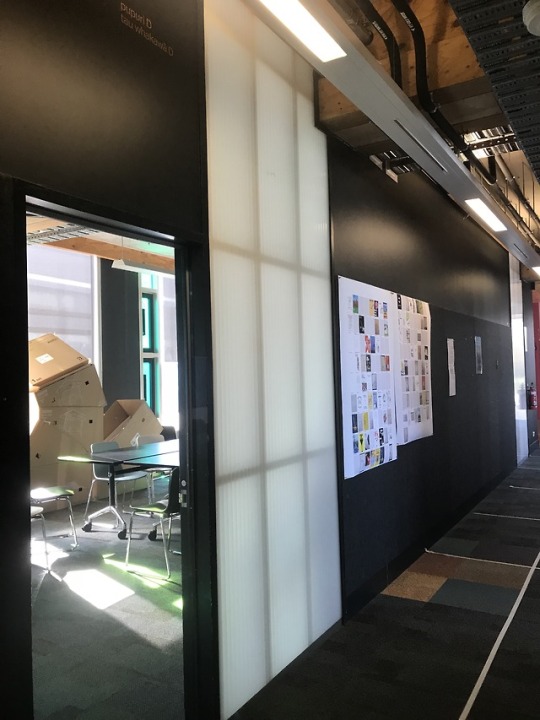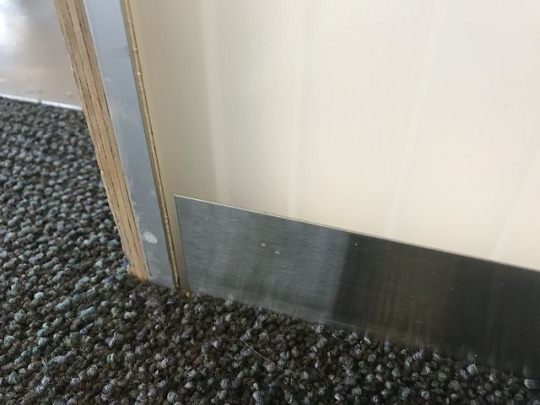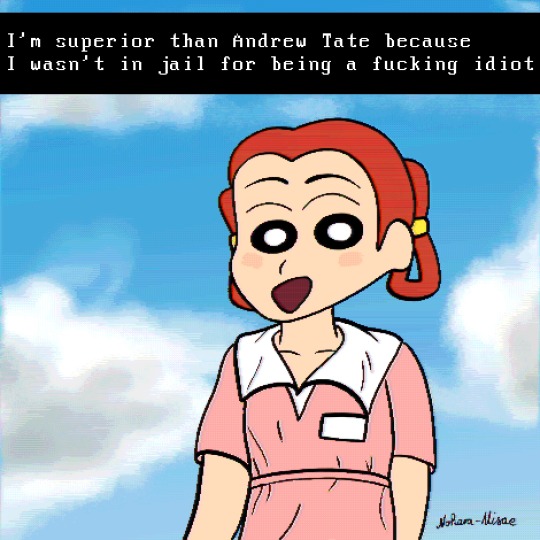#hihiko
Text

I just triggered the Intelligence of my country, but they found only spies from foreign countries. LOL
0 notes
Text
EXPERIENCE TOUCHPOINT CHARACTER GUIDES
The fruit characters are placed around campus, 'walking' towards Te Ara Hihiko. This is mentioned in the brochure so attendees know from the get-go.

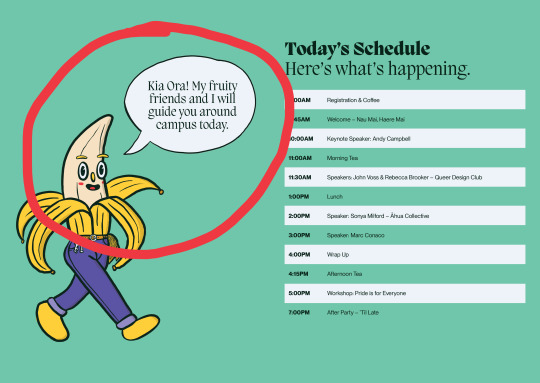
0 notes
Text
Final Experiential Touchpoint
I have chosen to add the colours and illustrations throughout Te Ara Hihiko to help draw recognition to the conference. Because this is based on designing for children i felt that there was a need for more colour and to bring more of the fun from my other touchpoints into the conference space. I also chose to add lanyards because I felt at tangible element was needed and this also helps establish who is involved in the conference incase someone was to get lost for example.
I feel that this touchpoint is the weakest of the three, mainly because i prioritised my time on the other two. But i also got stuck on what to do and i feel that i could've pushed myself a lot more into creating something possibly interactive that aligned with the youthfulness of the conference. But overall i am still happy with this outcome and i think it is fun and adds a good touch to the whole trans media of the conference.
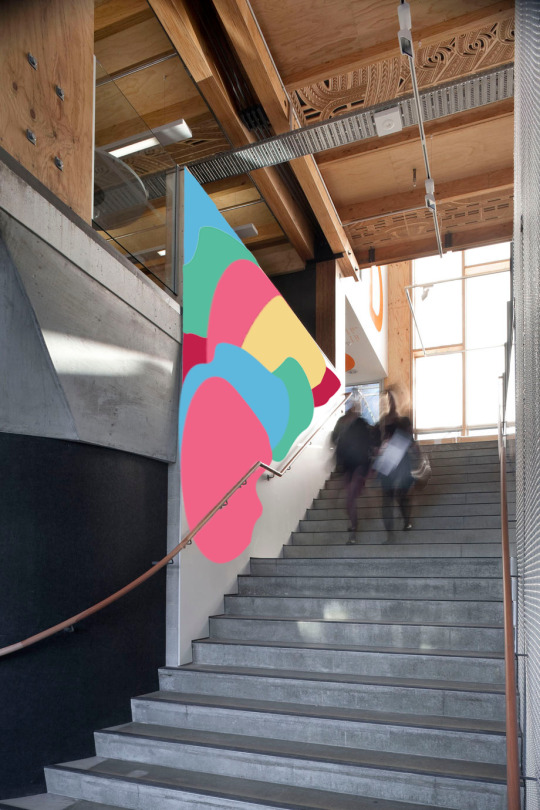
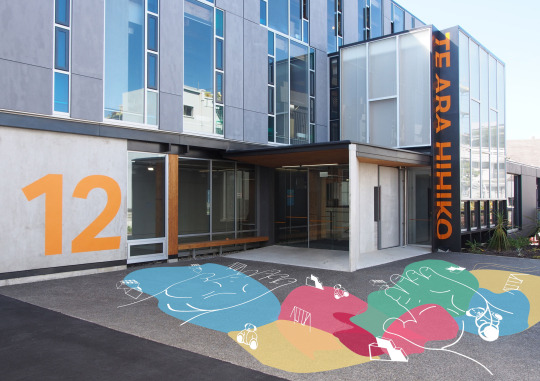
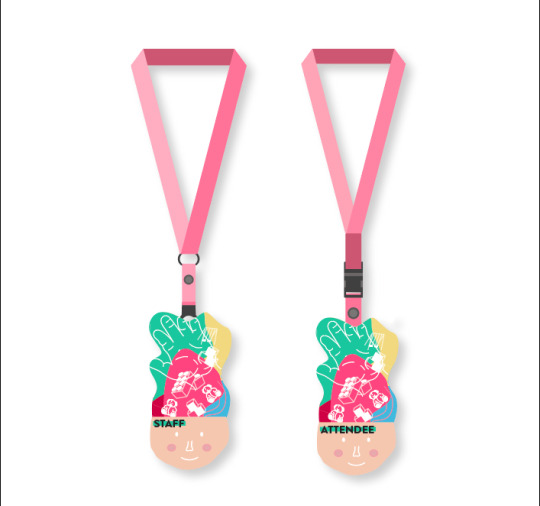
0 notes
Photo
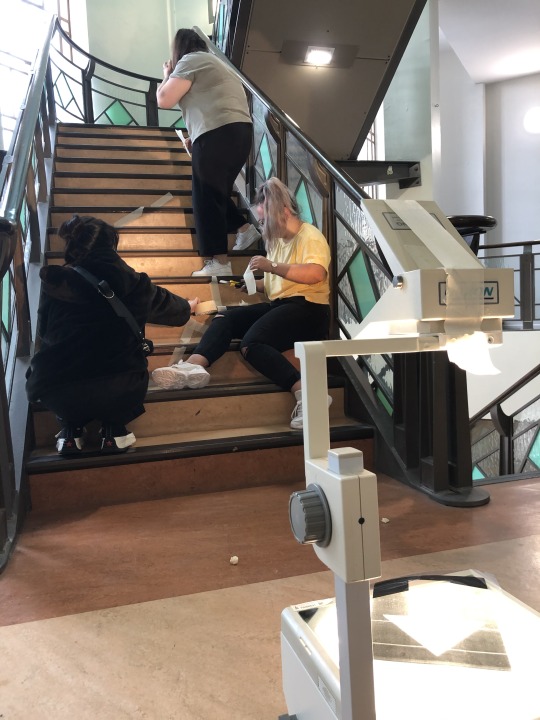
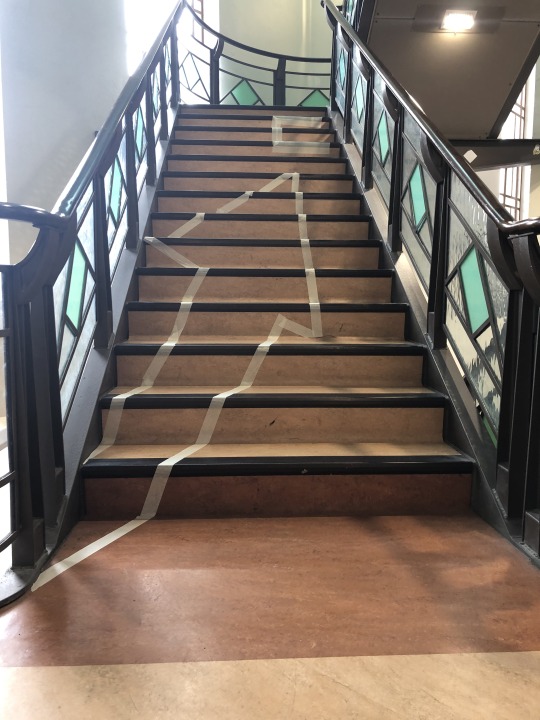

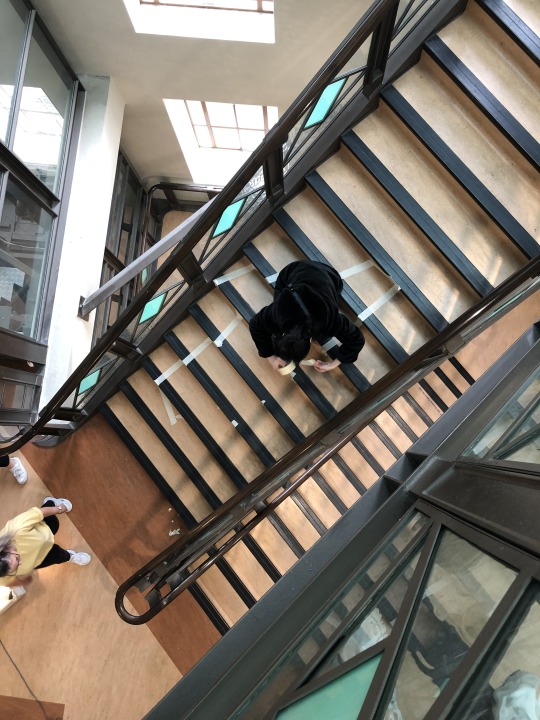
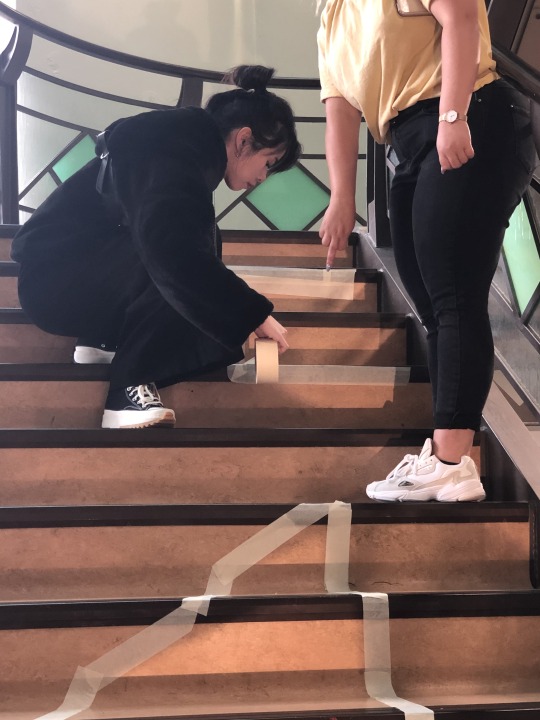
Week 2: Setting the Scene
This week we started to look at different ways that spatial type can be used in an environment, playing with different angles, surfaces and methods of displaying type.
Tasked with thinking about how spatial type can be used in Block 12 during our exhibition, our team was asked to look at how staircase type can be used. Looking at existing precedents, we decided to focus on wayfinding through Te Ara Hihiko to guide people to our exhibition. Using perspective, we mapped out a large-scale arrow as a guide through the different floors of Block 12.
We found this wasn’t as easy as it seemed, and ran into problems around point-of-views, projection and the stairs we had to work on. With the limited resources and time we produced something function, but with some more planning we feel this is a viable option for spatial wayfinding in Block 12.
0 notes
Text
IPO - Now
Here’s the latest revision of my IPO for the second half of semester 2…
WHITI O REHUA - SCHOOL OF ART Independent Project Outline
213.341 Art Studio Research IPO template:
Student Name: Anthony Fraser
Student ID: 15221100
Amendment #: 3
Amendment date: 2/10/19
Rōpū Lecturers: Simon Morris & Jenny Gillham
Intent: (50-100 words):
To conduct an auto-ethnographic research-based inquiry into my own family situation, formulating responses that use whatever media seems appropriate. So far this has been photographic, but could use a variety of media. Some media that interest me and seem like they might be fitting of my purposes are print, sound and video. I feel that there is a natural progression from photography to these media, and I imagine that there could be a balance formed between archival material and work that I produce myself.
Background: (200-300 words):
Briefly describe what you did last semester, what you intend to develop from this work, and what (if anything) you are not going to continue to work with.
This past semester I’ve made photographic works that document and respond to aspects of my life that I consider to be quintessential parts of living in New Zealand. This work aimed to investigate aspects of New Zealand mainstream Pākehā culture, and to offer some kind of critique. I’m not sure entirely how successful this was, but as I learned more and developed more work, I became less interested in producing work that claimed any kind of finality in its assumptions, and less overtly critical. My more recent work was responding to everyday views from and within my domestic environment, and I’ve learned that questioning these more personal experiences seems more fulfilling, furtive and genuine than trying to critique larger cultural themes. My plan for the coming semester is to engage with matters that have personal emotional significance for me, and see what happens when I question them openly in a fine art context.
Method and resources: (100-200 words):
What do you intend to make (i.e., painting, sculpture, video, etc., etc.), and how (materials and processes). Do you need an individual studio space or can you use the shared space? What knowledge and skills do you need to gain, and what investigations do you plan to undertake?
I hope to produce photography, print media, and perhaps video and sound works to respond to lines of inquiry. I plan to investigate my own family history, recent and through further generations past, using the family archive and other archives if possible. Works responding to this research will hopefully come together in through an installation-based approach. There are still various avenues I intended to research that I haven’t yet had time for, such as a specific project researching my great-great grandfather’s job as a clown on National Radio. I’ll continue to use facilities all around CoCA, including the photography department, fine arts block, Te Ara Hihiko and perhaps more. I would like to develop my practice to being more installation-based and multi-media if I can find a way of combining these various media effectively. I need to continue my research into theories surrounding documentary, and other disciplines of art-making.
References:
Begin a list of a minimum of 6 references, four of which must be artists or artworks whose work is inspirational and whom you intend to continue to use to develop your own work, and two other references (text, music, film, other writing, etc.) Briefly describe how each reference is relevant to your own intended research.
Reference both texts and artwork images properly: you should use the system recommended for visual material on OWLL, which includes the artist’s name, the date of the artwork and a URL, book or exhibition note.
Edith Amituanai: #keeponkimiora
This book is very powerful. It is a documentary photographer getting to the heart of the politics of representation and taking an ethical approach to their field. Documentary photography has shady roots in New Zealand, and Amituanai is well aware of this. Furthermore, mainstream media organisations wield power when using various forms of representations (editorial, photographic, video), often to great harm. Amituanai is a voice singing another tune to the oft-negative representations of members of her community and communities like hers (non-Pākehā, low socio-economic, etc.). She provides positive images of people, often young people, in her community, gaining their trust, their consent, working with them to produce images they consider to be appropriate, together. She is an actively contributing to the decolonisation of New Zealand fine art spaces, and although this is not hat I intend my work to be about per se, role models like this are always in my mind whilst I’m making work. I wonder what Sontag or for that matter Spivak would have to say about her work.
Phillip Andrew Lewis: SYNONYM
This body of work responds to Andrew Lewis’ time in a drug rehabilitation centre where in his teens he was forcibly held against his will for 2 years. The organisation that held him is no longer in operation in the USA, but Andrew Lewis returned to multiple sites it used to run rehabilitation centres. Combining found objects, photography, graphic elements and performance-based works based on personal experience, Andrew Lewis has formed a large body of work in response to this.
Andrew Lewis employs a diverse range of media in his practice, which is surrounded by so many contexts. He investigates these physical, social, political contexts through various ways of making and curating. I plan to use a diverse range of media in my own work also.
Paul Pfeiffer: The Saints
Investigating British cultural identity through the emotionally charged arena of the football field, Pfeiffer manipulates scale in a highly effective manner. Playing recordings from the 2007 opening of Wembley Stadium of the crowd chanting various anthems throughout a largely empty gallery space, the viewer is immersed in the audio aspect of the work. There are some visual components, videos of football fans and matches from around the world, which add new layers of context. Pfeiffer’s careful process of selection will inform how I engage with the spaces I’m using, and which elements of works to include or edit out of installations.
Joanna Margaret Paul & Pascal Harris: Light on Things
This was an exhibition (and publication) of Joanna Margaret Paul’s work curated by her youngest son, Pascal Harris. It celebrates her work and life, yet is simultaneously drenched in the grief of a son for his mother. The exploration of these personal relationships though exhibition and printed matter has helped guide me through my own exploration of these matters in my work this semester.
Rachael Rakena: One man is an island
This and other works of Rachael Rakena have influenced what I’m making. The way she strips back the world that her subjects perform in, adding usually only one contextual element, gives her work a captivating presence. Keeping the strength of these aesthetics in mind, along with the personal nature of the content, will help to show me some direction when making work this semester. One can use personal stories to share ideas on larger narratives.
Amituanai, E. #keeponkimiora. Hastings: Hastings Art Gallery, 2018.
Andrew Lewis, Phillip. SYNONYM. Headlands Center For The Arts, San Francisco, 2017.
Harris, Pascal. Light On Things. Brett Mcdowell Gallery, 2016.
Pfeiffer, Paul. The Saints. The Junction, Engineers Way, Wembley, London, 2007.
Rakena, Rachael. One man is an island. Bartley + Company Art, Wellington, 2009.
In consultation with your lecturer, complete your IPO as following the template above.
Be mindful of the learning objectives for this course:
Students who successfully complete this paper should be able to:
• Outline, develop and undertake an independent project.
• Thoroughly investigate relationships between concepts, media and processes.
• Extend competence in self-directed inquiry and its application to the development of studio projects.
• Present their work for assessment in a considered and appropriate manner and contribute to critical discussion in relation to their own work and that of their peers.
Adhere to the recommended word lengths: your complete IPO should not exceed 500 words, plus references.
This is a document you will be asked to revisit, progress and develop numerous times this year, so always include your amendment iteration and date in the boxes above so you know which version it is.
0 notes
Text
Week One - Monday
Today we started off with the Shared Moment. All the design disciplines met on D Floor of the Te Ara Hihiko building. After that, us VCD students went to the Pit to listen to Warren Maxwell talk through 5 of his songs.
Here are some notes we took:
Nature of Man
Question against humanity, religion, belief, systems
Middle East, Kim Jong Un, shootings in America
Political happenings in the world at the time
Home Land and Sea
Children and grandchildren may not have the same experiences
Queen bee refers to the crown
Reflective
Treaty issues, people fighting over their land (Ihumatao)
Peaceful Man
Passive resistance
Reminder that men can be peaceful creatures
Male purpose/role has changed over time
Little Things
Standing on your own two feet
Growing up
Don’t let the little things build up
To Oranga
Observation of life
Cycle
Celebration
0 notes
Text
Week Nine: Third Brief
I joined the Block One group as they needed more people. I also felt as though I could help with visualisations and mockups.
02: Putting block 1 on the map
Massey University Wellington’s block 1 redevelopment has seen the creation of a dedicated staff space (Te Whare Pukaka) and the making of a home for Te Rewa O Puanga – the School of Music and Creative Media Production. There is a wayshowing system in development inside to bring together elements from Te Whare Pukaka and also Te Ara Hihiko (Block 12) but there is an underutilised entryway that lacks appropriate signage, and also a means to link the building to the wider campus and give it a distinct identity. How can this be addressed through spatial typography that unifies the visual language inside with the outside, in a way that utilises the affordances of the existing architecture?
0 notes
Text
SPECIFICS
You may use design elements in any way you wish, but must be within these (flexible) formats
ENGAGE >POSTER: THIS MUST BE AT LEAST A2.
This may be a broader interpretation of a poster, an insitu communication.
The poster must include a title for your conference, strapline, introduction, speakers dates, venue and logos.
INFORM >BROCHURE: 12 PAGE, SIZE A5 130MM X 185MM, APPROX 1000 - 2500 WORD COUNT.
This may be a web-based ‘brochure’ if more appropriate within your design strategy.
The brochure must include an introduction paragraph explaining the conference theme, and a short biographical text and image for each of the 5 speakers (at least 1 New Zealander, and wouldn't it be nice to see a woman or two), and a timetable of the speaker sessions (text supplied in week 3), plus the a title for your conference, strapline, introduction, speakers dates, venue and logos.
EXPERIENCE >ENVIRONMENTAL OPEN FORMAT:
A design response appropriate for your rhetorical design strategy that utilises interaction, 2-way dialogue, moving image or other media site within the conference venue Te Ara Hihiko.
0 notes
Text
PARAMETERS
This module counts as 50% of the semester grade.
Imagine a conference that appeals to an audience of design professionals, students, and educators. Held in Te Ara Hihiko in conjunction with the Designers’ Institute of New Zealand.
5 speakers –
They must be alive
One keynote speaker
At least one from Aotearoa, and one woman.
Steer away from Stefan Sagmeister, Paula Scher, David Carson; they’re great at their craft but overused in this project. Dig deeper!
3 related ‘touch points’ –
Engage & Attract
Inform – tell us who the speakers are, tell us exciting things about the topic.
Experience – an environmental element. What do we see at Massey and Te Ara Hihiko? Make it immersive, something for the audience to engage with.
Develop a visual language. Prioritise convincing us visually rather than through the content.
0 notes
Text
3rd Touchpoint Progress
I initially had the idea of creating a playground of some sort in Te Ara Hihiko for the guests to interact with. I struggled to think of ways to create this without having access to the building to take photos of the right angles and i was questioning my ability to digitally create the playground so i decided to unfortunately leave that approach. if i had the resources and more time it is something i definitely would've looked into.
Here is a list of other options i came up for my 3rd touchpoint:
lanyards
notebooks
totebag
colouring in pencils
toys
display on building walls
display on floor at entrance
adding bright colours to the building
screen motion graphic
I decided to try putting some of the colours on the stairs inside to add a pop of colour and create recognition with the conference. i feel that the colours are an important part of the conference transmedia and is a good way to establish it.
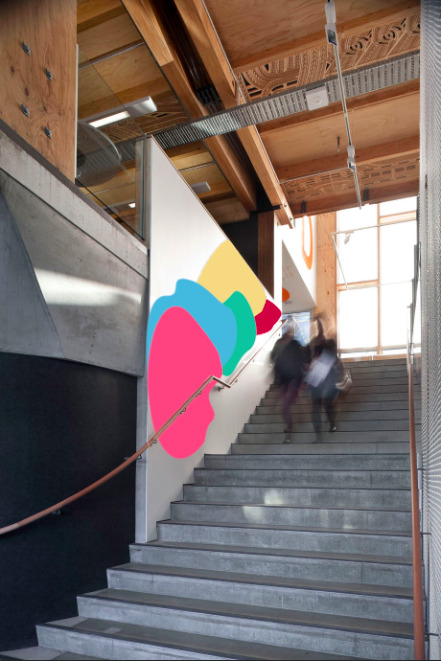
I started with this but i felt that it looked a but funny not covering the whole wall so i extended it. and created this.
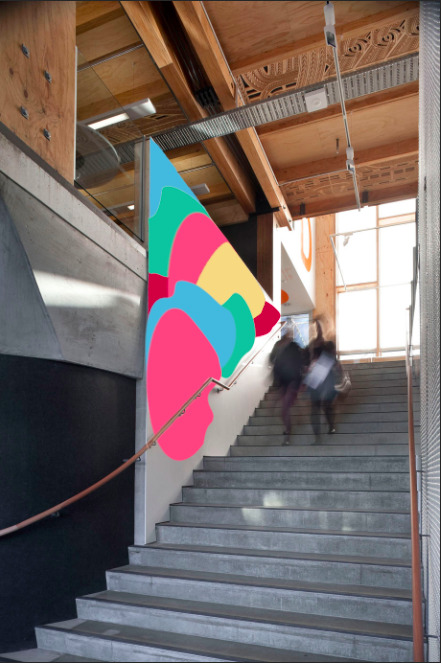
I feel that this will be a good way for people to see that they need to head upstairs for the conference and it looks really bright and playful which is something i like. I may add some of the illustrations to it because it does look a little plain.
0 notes
Text
Rationale
I have created a Typographic Design Conference. My idea here is to create a series that uses different images in the same style and colour palate, to promote this conference. I have used puns in reference to fonts as ‘in-jokes’ that other designers will understand. For example, this poster shows a picture of an old-school radio – the kind that you have to use an aerial to make it work. Supporting this is the text saying, “Gone are the days of the arial” in the font Arial. The pun here refers to two things that were once “in” but are no longer used or as cool. This clearly demonstrates my whole idea using rhetoric imagery and text to show that the conference is about what fonts to use and what not to use.
I have created a series of posters rather than one as to show the system I have designed. Although they all have different imagery and heading text, you can see by the purple/yellow overlaying pictures and the use of puns there is a correlation between them all.
This system has spread over the pamphlet, the sticker/banner on the doors of Te Ara Hihiko, and the drawing/sketch book designed to be given away at the conference – lined to practice typography/calligraphy.
Siobhan McIvor
0 notes
Text
IPO - Now
Here’s my revised IPO...
WHITI O REHUA - SCHOOL OF ARTIndependent Project Outline
213.341 Art Studio Research IPO template:
Student Name: Anthony Fraser
Student ID: 15221100
Amendment #: 2
Amendment date: 30/5/19
Rōpū Lecturers: Simon Morris & Jenny Gillham
Intent: (50-100 words):
To conduct an auto-ethnographic research-based inquiry into my own family situation, formulating responses that use whatever media seems appropriate. So far this has been photographic, but could use a variety of media. Some media that interest me and seem like they might be fitting of my purposes are print, sound and video. I feel that there is a natural progression from photography to these media, and I imagine that there could be a balance formed between archival material and work that I produce myself.
Background: (200-300 words):
Briefly describe what you did last semester, what you intend to develop from this work, and what (if anything) you are not going to continue to work with.
This past semester I’ve made photographic works that document and respond to aspects of my life that I consider to be quintessential parts of living in New Zealand. This work aimed to investigate aspects of New Zealand mainstream Pākehā culture, and to offer some kind of critique. I’m not sure entirely how successful this was, but as I learned more and developed more work, I became less interested in producing work that claimed any kind of finality in its assumptions, and less overtly critical. My more recent work was responding to everyday views from and within my domestic environment, and I’ve learned that questioning these more personal experiences seems more fulfilling, furtive and genuine than trying to critique larger cultural themes. My plan for the coming semester is to engage with matters that have personal emotional significance for me, and see what happens when I question them openly in a fine art context.
Method and resources: (100-200 words):
What do you intend to make (i.e., painting, sculpture, video, etc., etc.), and how (materials and processes). Do you need an individual studio space or can you use the shared space? What knowledge and skills do you need to gain, and what investigations do you plan to undertake?
I hope to produce photography, print media, and perhaps video and sound works to respond to lines of inquiry. I plan to investigate my own family history, recent and through further generations past, using the family archive and other archives if possible. There are skills to learn regarding sound engineering (a specific project I would like to research is that my great-great grandfather was a clown on National Radio), and skills to hone with photography and print design. I’ll continue to use facilities all around CoCA, including the photography department, fine arts block, Te Ara Hihiko and perhaps more. I would like to develop my practice to being more installation-based and multi-media if I can find a way of combining these various media effectively. I need to continue my research into theories surrounding documentary photography, and other disciplines I end up engaging with.
References:
Begin a list of a minimum of 6 references, four of which must be artists or artworks whose work is inspirational and whom you intend to continue to use to develop your own work, and two other references (text, music, film, other writing, etc.) Briefly describe how each reference is relevant to your own intended research.
Reference both texts and artwork images properly: you should use the system recommended for visual material on OWLL, which includes the artist’s name, the date of the artwork and a URL, book or exhibition note.
Edith Amituanai: #keeponkimiora (photobook)
This book is very powerful. It is a documentary photographer getting to the heart of the politics of representation and taking an ethical approach to their field. Documentary photography has shady roots in New Zealand, and Amituanai is well aware of this. Furthermore, mainstream media organisations wield power when using various forms of representations (editorial, photographic, video), often to great harm. Amituanai is a voice singing another tune to the oft-negative representations of members of her community and communities like hers (non-Pākehā, low socio-economic, etc.). She provides positive images of people, often young people, in her community, gaining their trust, their consent, working with them to produce images they consider to be appropriate, together. She is an actively contributing to the decolonisation of New Zealand fine art spaces, and although this is not hat I intend my work to be about per se, role models like this are always in my mind whilst I’m making work. I wonder what Sontag or for that matter Spivak would have to say about her work.
Bruce Connew: I Saw You (photoseries)
In this series, Connew spent a year with a long lens on his camera, photographing people in a public car park visible from his house. After choosing the final photos to present for this body of work, he blurred their images, “[taking] away some of their identity and shuffl[ing] them together”. This surveillance-style approach to photography took street photography from being directly from the street to being of the street, from up high. It removes the individual identities of each subject, but keeps aspects of the identities they have chosen to present to the world: their clothing, their actions, their way of being in public space. It captured and re-presented the mundane, everyday existence of a handful of people as they existed in public space. This work acted as a sort of cultural profiling that I would like to consider in relation to my own photographic work, which recently has been snapshot street photography.
Meg Porteous
Meg Porteous is a young artist who has been showing photographic work for a few years in New Zealand. Her work focuses on the mundane, be it in her own life, on the street, or “behind the scenes” of experiences like travel and tourism. I’m drawn to Porteous’s photographic aesthetic, from subject matter/framing to presentation & installation, so will be considering her work when making my own. She also primarily shoots with 35mm, as I also do.
Geoff Park: Theatre Country: Essays on Landscape and Whenua
Geoff Park’s book of essays Theatre Country: Essays on Landscape and Whenua has been formative to my perspective on how people interact with and understand their relationship to land and place in New Zealand. He was an ecologist, and wrote from this perspective, often in regards to Wellington city itself. I hope that the essays in this book might help to inform some of my decisions about making art in Wellington, with a more acute awareness of the history of the city and what was here before it was a city. This may be important if I end up making site-specific work.
Haruhiko Sameshima: Bold Centuries
Some of Sameshima’s photography has been centred around critiquing New Zealand culture, the history of documentary photography in New Zealand, and the place and approach of the museum in New Zealand to cataloguing the history and culture of the country. Sameshima’s work will (I hope) act as a reference point for me to consider how the visual tactics of my own work sit in a wider national photographical and pictorial/visual cultural context.
Susan Sontag: On Photography
I will be referencing Susan Sontag’s On Photography, as well as other texts on the ethics of photography, to inform my work, as my place as a white male photographer is one that is often criticised, and I would like to be clued-up on my position as an artist.
Amituanai, E. (2018). #keeponkimiora. Hastings: Hastings Art Gallery.
Connew, B. (2007). I Saw You. [Archival photographic prints] Wellington: {Suite} Gallery.
Park, G. (2006). Theatre Country: Essays on Landscape & Whenua. Wellington: Victoria University Press.
Sameshima, H. (2009.) Bold Centuries. Auckland: RIM Books.
Sontag, S. (1977). On Photography. London: Penguin Books.
In consultation with your lecturer, complete your IPO as following the template above.
Be mindful of the learning objectives for this course:
Students who successfully complete this paper should be able to:
• Outline, develop and undertake an independent project.
• Thoroughly investigate relationships between concepts, media and processes.
• Extend competence in self-directed inquiry and its application to the development of studio projects.
• Present their work for assessment in a considered and appropriate manner and contribute to critical discussion in relation to their own work and that of their peers.
Adhere to the recommended word lengths: your complete IPO should not exceed 500 words, plus references.
This is a document you will be asked to revisit, progress and develop numerous times this year, so always include your amendment iteration and date in the boxes above so you know which version it is.
Please upload your completed IPO as a Word document (.doc) to the dropbox on STREAM by 5.00pm Tuesday of Week 3, 12 March 2019.
0 notes
Photo
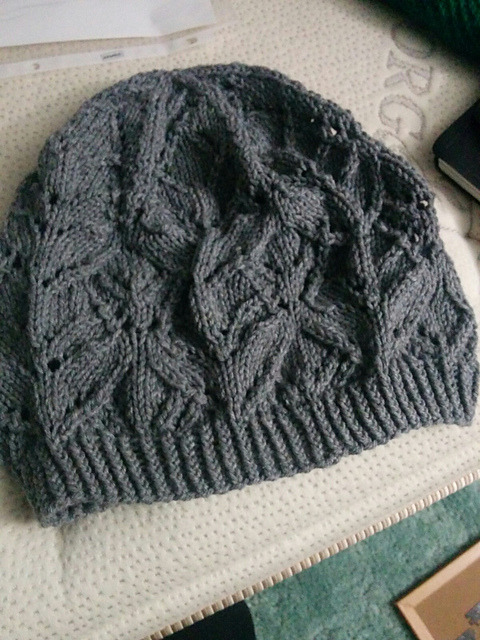
Hihiko hat that will actually be lined and made into a bag. Rav pattern here: http://www.ravelry.com/patterns/library/hihiko-hat
0 notes
Text
Materials combinations
Polycarbonate
Wood
Concrete
Precedent: Te Ara Hihiko
https://bestawards.co.nz/graphic/environmental-graphics/massey-university-college-of-creative-arts-29/Entry:3f57f4a1-ffdc-4572-955c-1c26e323a908/
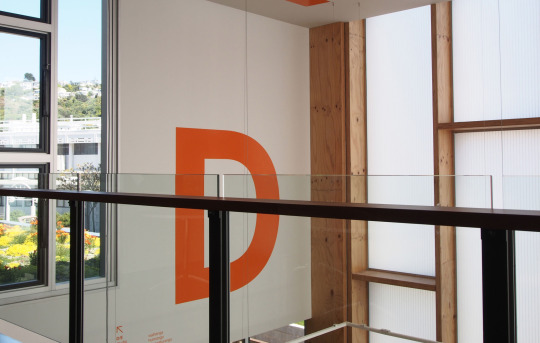

0 notes

